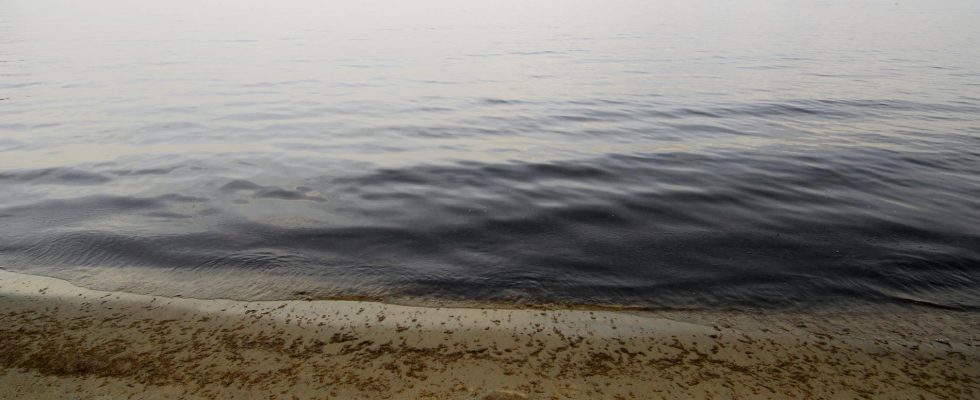Save the article
1 / 3Photo: Hasse Holmberg / TT
A company is in the starting pits to suck up lumps from the bottom of the Baltic Sea in search of metals for the green transition.
But there are concerns – such as disturbed small animals, disrupted cycles and increased emissions.
– There is an urgent need to know more about how the environment is affected, says marine biologist Francisco Nascimento.
It is one o’clock in the morning and darkness is thick over the Gulf of Bothnia. The scientists aboard the ship Gothia begin to break into a cold sweat; despite attempts with several different instruments, they do not retrieve any samples from the seabed.
The bottom is completely covered with hard lumps. When even the slimmest instrument doesn’t reach down, nervousness rises.
– Then we were really sweaty, says marine biologist Francisco Nascimento later.
The lumps are actually the reason for the researchers’ expedition, and they are highly sought after. They contain iron, manganese and rare metals that are needed in everything from electric car batteries to wind turbines and solar cells – and are thus seen as keys to the green transition. There is also a great need to extract more of them in Europe to reduce dependence on, among other things, China.
Important circuits
The Swedish company Scandinavian ocean minerals is in the starting pits to do something completely new: To “vacuum” the bottom of the Baltic Sea to get up the lumps, or nodules as they are called. The company has received exploration permits for two areas in the Gulf of Bothnia outside Skellefteå that have proven to be particularly rich in nodules.
But there is a catch: No one knows how the extraction affects the environment. For example, the microorganisms on the seabed – which may seem insignificant – but which control the cycles of carbon and nitrogen which in turn make “the whole ocean work” as Francisco Nascimento, who is a researcher at Stockholm University, puts it.
Another concern is that extraction may increase emissions of greenhouse gases from the seabed. As well as environmental toxins in the sediments to swirl up and spread.
Map wildlife
A few days after the sweaty expedition, Francisco Nascimento stands in his lab at Stockholm University and weighs a pile of brownish-black lumps in his hand. In the end, the researchers found a slab that could be sampled, and in a cold room there are now long tubes with sections of the bottom of the Baltic Sea.
Seawater splashes around Francisco Nascimento’s feet as he lifts a pipe.
– You have to know more before you start mining the metals. Today, there is too little knowledge to assess the effects, he says.
Using the samples, the researchers will map the diversity of small animals, microorganisms, oxygen and salinity and other things that affect the cycles in the Baltic Sea. This spring, they will make a new turn with the ship and move the seabed to simulate the “vacuuming” of nodules, and investigate the effects.
– The question is not whether the extraction would cause a disturbance in the sea. Regardless of how big it gets, and how fast the recovery goes, says Nascimento.
Francisco Nascimento explains that as a marine biologist, he prefers not to disturb the seabed and its ecosystem at all. But that it might turn out to be “the least bad option” considering how acute the climate crisis is.
– The minerals are needed for the green transition and the question is what is the least bad way to get them.
Can metal leak?
One concern, according to the company, is that the lumps will begin to dissolve as the Baltic Sea becomes more acidified. As pH levels drop, phosphorus and metals could be released.
– We don’t know that, but it is something we will investigate. We will see how much metals come out and whether it is about toxic levels for life in the water, says Francisco Nascimento.
Perhaps the environmental impact is also less if the metals are extracted from the seabed where they are taken up only once, instead of from mines on land where the environmental impact probably takes place over a longer period of time, reasons Nascimento.
On the other hand, he points out, the extraction would be done in some of the most pristine parts of the heavily exposed Baltic Sea, with unusually healthy bottoms. Should humans go there and disturb there too?
– It is not an easy question.
FACT Mining on the bottom of the Baltic Sea
The government has given the company Scandinavian ocean minerals an exploration permit for sampling in two areas in the Gulf of Bothnia. The aim is to map the bottom and investigate whether extraction can be done in a sustainable way.
It is unclear how large the deposit is, but the company estimates that there are 20 million tonnes of nodules in the areas in question. The nodules contain manganese, iron, silicon and phosphorus, but also other substances that can be used for, among other things, electronics.
Manganese is used, among other things, in batteries, fossil-free steel and fertilizer. Silicon is used in, among other things, solar cells and semiconductors.
The nodules have been formed over centuries via processes on the seabed in the boundary layer between sediment and water.
The research on the environmental impact of extraction in the Baltic Sea is carried out by Stockholm University, in collaboration with the universities of Umeå and Gothenburg.
Source: Scandinavian ocean minerals, National Museum of Natural History, Francisco Nascimento.
Read more
